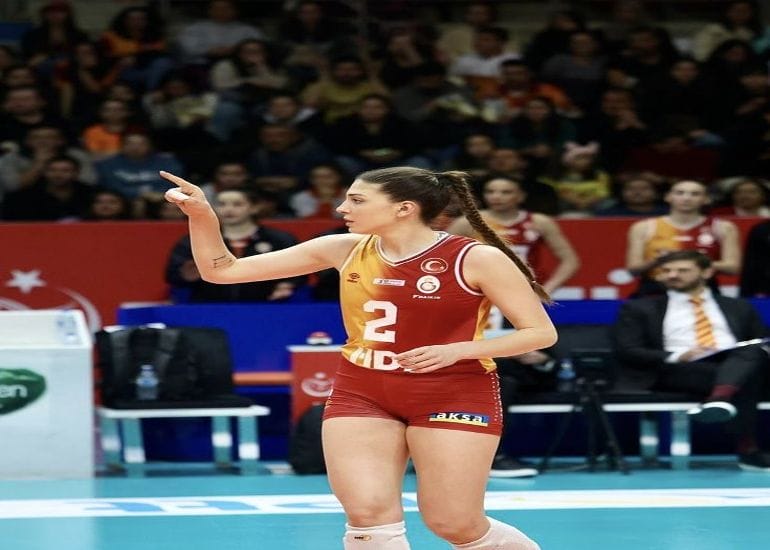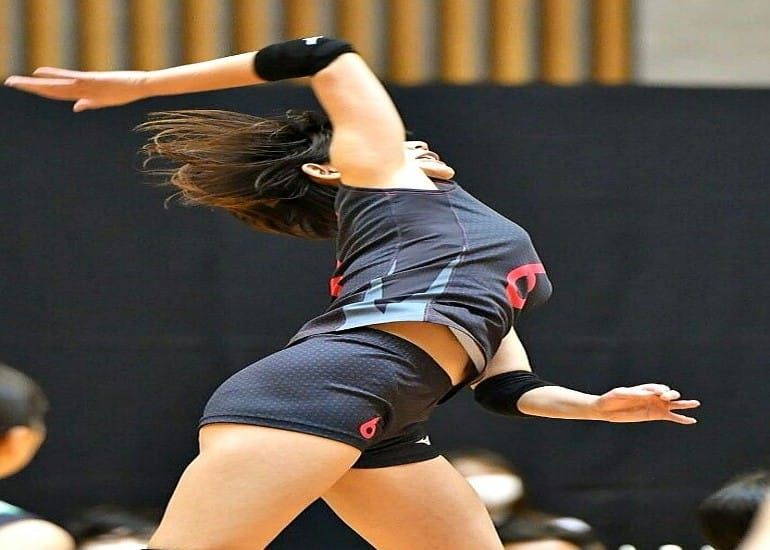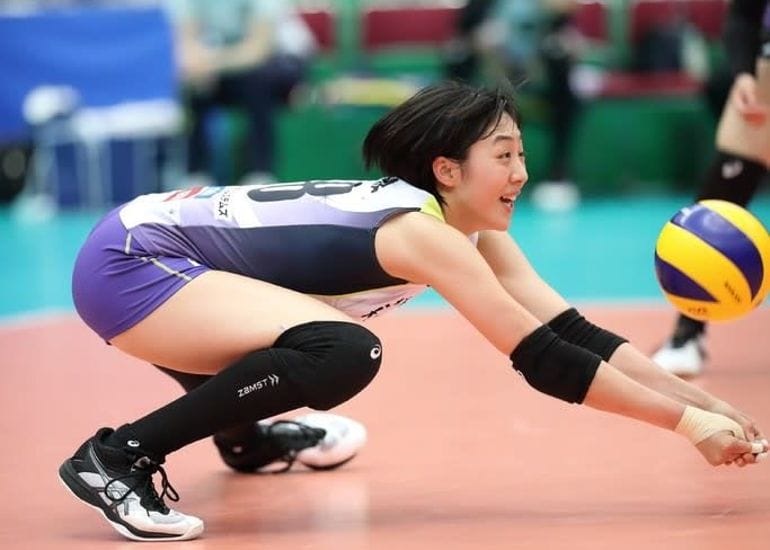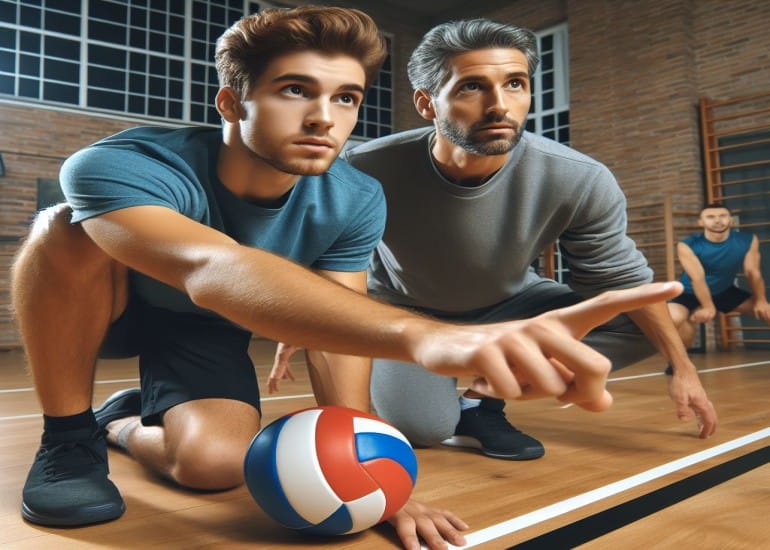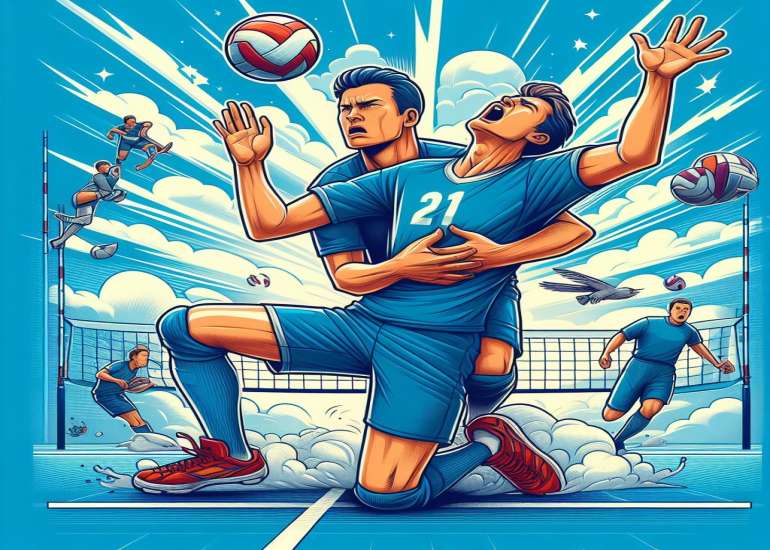What Is A Bump In Volleyball?
The expression “bump pass” might be new to the people who are new to the game of volleyball. Be that as it may, for prepared players and mentors, the knock pass is a vital component of the game. All in all, what does a bump pass mean in volleyball? A bump pass, also known as an arm pass or dig, is a type of receiving technique used in volleyball. It involves using the arms to catch and control the ball as it hits the player. Bump passes are on target to put the ball in play and attack or serve. “The bump pass stands as a cornerstone skill crucial for every volleyball player’s repertoire. Its execution demands swift reflexes, impeccable hand-eye coordination, and precise technique. Beyond its integral role in gameplay, mastering the bump pass offers a valuable upper-body workout while enhancing overall coordination and agility. Elevate your volleyball prowess by honing this fundamental technique to perfection.” Despite its importance, the bump pass is much of the time ignored and underestimated in the game. Numerous players and mentors center more around spiking and serving, disregarding the significant job that the bump pass plays in a group’s prosperity. In this article, we will dive further into the bump pass and its importance in the game of volleyball. Proper Body Positioning: The foundation of a successful bump pass begins with proper body positioning. Stand with feet shoulder-width apart, knees slightly bent, and body weight evenly distributed. This stance provides stability and allows for optimal movement and balance while executing the bump pass Hand Placement and Arm Position: Next, focus on hand placement and arm position. Bring your hands together with palms facing upward, creating a flat platform with your forearms. Keep your elbows slightly bent and close to your body to maximize control and accuracy when contacting the ball. Contact and Absorption Techniques: As the ball approaches, make contact with the center of your forearms, just above the wrists. Bend your knees slightly upon contact to absorb the force of the ball and control its momentum. This technique minimizes the impact on your arms and allows for a smooth transition from contact to follow-through. Follow-Through and Directional Control: After making contact, extend your arms forward and upward, directing the ball toward the desired location on the court. Focus on maintaining a consistent follow-through motion to ensure precision and accuracy in directional control. By mastering the follow-through, you can effectively set up your teammates for successful attacks or keep the ball in play during defensive situations. Improving Bumping Skills: Tips and Strategies Consistent Practice and Repetition: Consistent practice is key to mastering the bump pass. Set aside dedicated practice sessions to focus on bumping skills, including both individual drills and team exercises. Repetition helps reinforce proper technique and builds muscle memory, leading to improved performance on the court. Focus on Technique and Timing: Pay close attention to your technique and timing when executing the bump pass. Focus on maintaining proper body positioning, hand placement, and contact techniques with each repetition. Additionally, practice reading the trajectory of the ball and anticipating its movement to ensure timely and accurate bump passes during gameplay. Incorporating Bump-Specific Drills: Incorporate bump-specific drills into your practice routine to target and improve specific aspects of your bumping skills. Drills such as partner passing, wall passing, and target passing help refine accuracy, control, and directional placement of bump passes in various game situations. Enhanced Ball Control and Distribution: Mastering the bump pass allows for enhanced ball control and distribution on the court. By accurately redirecting the ball to teammates, players can initiate offensive plays and maintain possession during rallies, contributing to overall team success. Contribution to Offensive and Defensive Strategies: The bump pass plays a crucial role in both offensive and defensive strategies in volleyball. Offensively, precise bump passes set up teammates for powerful attacks and scoring opportunities. Defensively, well-executed bump passes enable players to effectively receive and control the ball, thwarting the opposing team’s offensive efforts. Improvement in Overall Coordination and Agility: Regular practice of bumping skills improves overall coordination and agility on the volleyball court. By honing hand-eye coordination, footwork, and reaction time, players become more adept at reacting to the ball and executing bump passes with precision and efficienc Over-rotating or Under-rotating the Forearms: One common mistake in bumping is over-rotating or under-rotating the forearms during contact with the ball. To avoid this, focus on keeping your forearms parallel to the ground and maintaining a flat platform with your hands when making contact. Incorrect Body Positioning: Improper body positioning can also lead to ineffective bump passes. Ensure that your feet are shoulder-width apart, knees slightly bent, and body weight evenly distributed to maintain balance and stability throughout the bumping motion. Lack of Timing and Anticipation: Timing and anticipation are crucial aspects of successful bumping. Practice reading the trajectory of the ball and anticipating its movement to ensure timely and accurate bump passes. By improving your timing and anticipation skills, you can consistently execute bump passes with precision during gameplay. Angle Control for Directional Placement: Advanced players can experiment with angle control to vary the directional placement of bump passes. By adjusting the angle of their forearms upon contact with the ball, players can direct the ball to different areas of the court, setting up teammates for strategic attacks or defensive plays. Advanced Footwork and Movement Patterns: Advanced footwork and movement patterns can also enhance bumping skills on the volleyball court. Practice moving quickly and efficiently to position yourself for bump passes in various game situations, including receiving serves, digging spiked balls, and setting up offensive plays. Bump Setting for Quick Offensive Plays: Bump setting is an advanced variation of the bump pass used to quickly set up offensive plays. By precisely redirecting the ball with their forearms, players can set up teammates for quick attacks and scoring opportunities, catching the opposing team off guard and capitalizing on scoring chances. Learn More… Conclusion: Elevating Your Volleyball Game through … Read more
